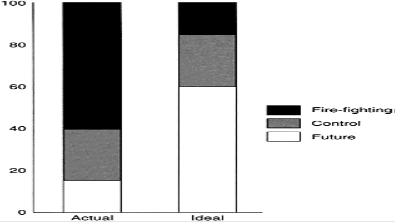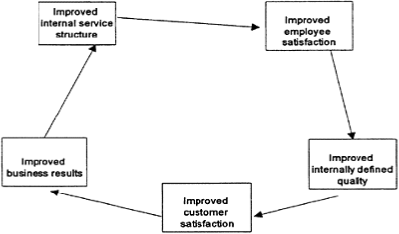Measurement Of Quality: An Introduction
Introduction:
Modern measurement of quality should of course be closely related to the definition of quality. Improvement is not about measurement; however effective measurement and data collection plays an important role.
Defining measurement system:
Measurements are classified according to two criteria: the stakeholder and whether we are talking about processes or results.
|
|
The company |
The customer |
The society |
|
The process |
Employee satisfaction (ESI) Checkpoints concerning the internal service structure |
Control and checkpoints concerning the internal definition of product and service quality |
Control and checkpoints concerning, e.g. environment, life cycles etc. |
|
The result |
Business results Financial ratios |
Customer satisfaction (CSI) Checkpoints describing the customer satisfaction |
‘Ethical accounts’ Environmental accounts |
Measurement of quality—the extended concept

Fig: Actual way of leading compared with the ideal
THE IMPROVEMENT LOOP

- Traditional measurements have focused on the lower left-hand corner of this table, i.e. the business result and we have built up extremely detailed reporting systems which can provide information about all possible types of breakdown of the business result.
- However, as mentioned above this type of information is pointing backwards and at this stage it is too late to do anything about the results.
- What we need is something which can tell us about what is going to happen with the business result in the future.
- This type of information we find in the rest of the table and we especially believe (and also have documentation for) that the first four squares of the table are related in a closed loop which may be called the improvement cycle.